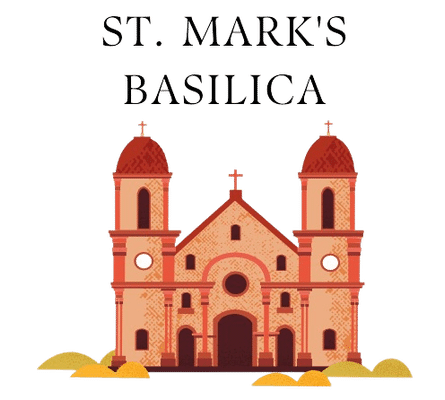St. Mark’s Basilica Floors
This section of the floor depicts the biblical story of the creation of the world, with scenes showing the creation of the sun and moon, plants and animals, and finally, Adam and Eve. The intricate mosaic work and vibrant colors make this section particularly impressive.
Do Checkout: Pala D'oro In St. Mark's Basilica
The Zodiac section of the floor shows the twelve signs of the zodiac, each represented by a different figure or symbol. The detail and artistry of each symbol are truly remarkable, and visitors can spend hours admiring the intricacies of each one.
Also Explore: St. Mark's Basilica Paintings
The four circles on the floor represent the four evangelists: Matthew, Mark, Luke, and John. Each circle shows the evangelist holding a book or scroll and surrounded by symbols associated with their gospel. The detail and precision of the mosaics in this section is truly awe-inspiring.
You May Also Like: St. Mark's Basilica Altar
This section shows scenes representing each month of the year, with each one showcasing the typical labor or activity associated with that time of year. The mosaics are incredibly detailed and give visitors a glimpse into life in Venice centuries ago.
Suggested Reads: St. Mark's Basilica Facts
Explore St. Mark’s Basilica Floor
The design and patterns of the St. Mark's Basilica floor are intricate and beautiful, featuring geometric patterns, images, and symbols that tell stories and convey meaning. They are a true works of art and a testament to the skill and creativity of the craftsmen who created them.
Also Checkout: Architecture Of St. Mark's Basilica
The St. Mark's Basilica floor has undergone several restoration and preservation efforts over the years to ensure its longevity and beauty. These efforts have included cleaning, repairs, and the use of modern conservation techniques to protect the delicate mosaic work from damage.
Must Read: History Of St. Mark's Basilica
The St. Mark's Basilica floor has a rich history and significance, dating back to the 11th century. It is a symbol of Venetian culture and history, featuring images and symbols that represent important religious and secular ideas. The floor has survived centuries of wear and tear, as well as natural disasters and wars, and remains a testament to the beauty and complexity of Venetian art and culture.
Recommended Reads: Sculptures At St. Mark's Basilica
FAQ's
What is the St. Mark's Basilica Floor?
The St. Mark's Basilica floor is a beautifully crafted mosaic floor located inside the St. Mark's Basilica in Venice, Italy. It features intricate designs and patterns that tell stories and convey religious and secular symbolism.
What is the best time to visit St. Mark's Basilica?
The best time to visit St. Mark's Basilica is typically in the early morning or late afternoon. Arriving early in the morning, around 9:00 AM, allows you to beat the crowds and enjoy a relatively peaceful experience. Alternatively, visiting in the late afternoon, around 4:00 PM, can also offer a quieter atmosphere. These times are generally less crowded compared to the midday hours when tourist activity peaks.
Is there a dress code to enter St. Mark's Basilica?
Yes, there is a dress code to visit St. Mark's Basilica in Venice, Italy. As it is a religious site, visitors are expected to dress modestly and respectfully. Both men and women should ensure their shoulders and knees are covered. Sleeveless tops, shorts, miniskirts, and revealing clothing should be avoided. It is recommended to wear comfortable footwear as well, as the basilica has marble floors and visitors are required to walk on them.
When was the St. Mark's Basilica Floor created?
The St. Mark's Basilica floor was created in the 11th century, but it has undergone several restorations and renovations over the centuries to preserve its beauty and protect it from damage.
Do Checkout: Leaning Tower of Pisa Opening Hours
What materials were used to create the St. Mark's Basilica Floor?
The St. Mark's Basilica floor is made up of a variety of materials, including marble, limestone, and various types of colored glass. The intricate designs and patterns were created using a technique called tessellation, which involves fitting small pieces of colored glass and stone together to form a larger picture.
What do the designs and patterns on the St. Mark's Basilica Floor represent?
The designs and patterns on the St. Mark's Basilica floor represent a variety of religious and secular themes, including scenes from the Bible, images of saints and angels, and symbols of Venice's maritime history.
Is the St. Mark's Basilica Floor open to the public?
Yes, the St. Mark's Basilica floor is open to the public, but visitors are asked to respect the space and avoid touching or walking on the delicate mosaic work.
How has the St. Mark's Basilica Floor been preserved over the years?
The St. Mark's Basilica floor has undergone several restorations and preservation efforts over the centuries to protect it from damage and ensure its longevity. These efforts have included cleaning, repairs, and the use of modern conservation techniques to safeguard the delicate mosaic work.

.jpg?w=1080&dpr=2)